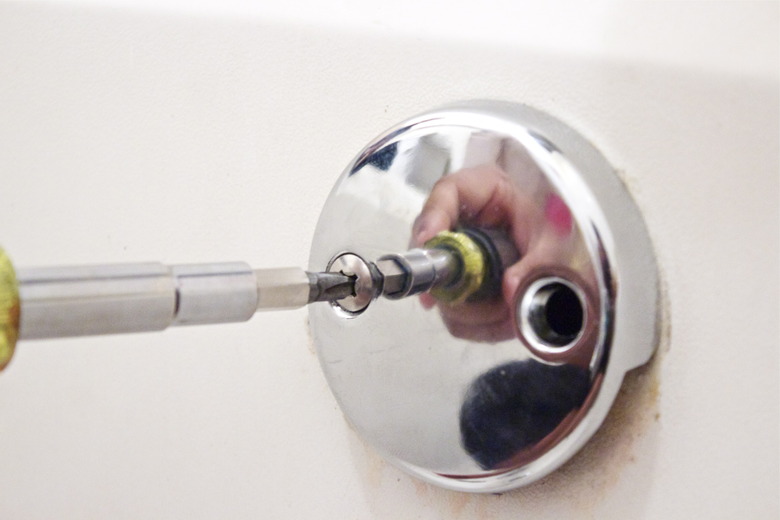How To Replace A Bathtub Overflow Drain Gasket
We may receive a commission on purchases made from links.
Bathtub overflow drains reroute extra water back into drainpipes to prevent the tubs from overflowing. One of the most important parts of these drains is the gasket, which provides a watertight seal. They do not last forever and can loosen, rot or crack. If you see water stains on your bathroom walls or ceilings, your overflow drain gasket may need to be replaced. Fortunately, the replacement process is fairly straightforward.
Finding the Drain and Tools
Finding the Drain and Tools
The bathtub's main drain is typically under the bathtub, and the overflow drain can be found a few inches beneath the tub's rim. Both drains merge into one central pipe. Although main drains have stoppers to hold in the water, overflow drains do not.
Replacing the overflow drain gasket is relatively easy. First, shut off the water source to the room you are working in and cover the drain so that nothing will fall in it. The tools you need include a utility knife, a screwdriver, pliers, a new overflow gasket, plumber's grease and caulk.
Removing the Old Gasket
Removing the Old Gasket
Use a utility knife (or another kind of scraping tool) to get rid of any caulk that is around the overflow plate, being careful not to damage the plate. With a screwdriver, remove the screws that are holding the plate on the tub. Pull out the assembly and place the screws and plate in a safe place where they will not get lost.
You should be able to see the deteriorated gasket in the hole. Try removing it with the pliers or your fingers. If it is difficult to remove, you can scrape at it with the knife until it loosens. Should the gasket fall apart, collect the pieces and toss them; it is fine if a few small pieces fall into the hole.
Installing the New Gasket
Installing the New Gasket
Lubricate the new gasket with a small amount of plumber's grease. Center it inside of the opening with the thicker side on the bottom; you may need to adjust until it fits into the right spot. In some cases, you may need to push the overflow pipe just a bit to make room for the gasket. When you feel the gasket conform to the hole, it should be in the right place.
Replace the drain assembly and then put the cover plate back in position. Use a screwdriver to replace the screws that hold the cover plate in place. Then, caulk all around the top half of the plate, taking care to apply the caulk evenly and without gaps. This is a good way to thwart any future leaks.
Overflow Drain Gasket Maintenance
Overflow Drain Gasket Maintenance
Bathtub floods can be a real headache, causing extensive damage and costly repairs. Since replacing the overflow drain gasket is fairly easy, it's not a bad idea to check it every year or so to see if it is starting to wear out. Another preventive measure is to look at the drain cover's screws every now and then to make sure that they are snug (though not too tight) and not starting to rust.
